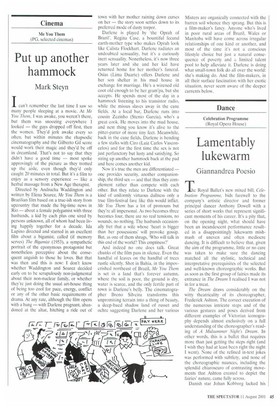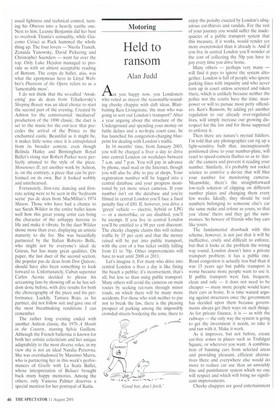Dance
Celebration Programme (Royal Opera House)
Lamentably lukewarm
Giannandrea Poesio
Te Royal Ballet's new mixed bill, Celebra donProgramme, bids farewell to the company's artistic director and former principal dancer Anthony Dowell with a series of short works that represent significant moments of his career. It's a pity that, on the opening night, what should have been an incandescent performance resulted in a disappointingly lukewarm mishmash of uneven and often mediocre dancing. It is difficult to believe that, given the aim of the programme, little or no care was taken to make sure the dancing matched all the stylistic, technical and interpretative prerequisites of the selected and well-known choreographic works. But as soon as the first group of fairies made its entrance in The Dream I realised I was not in for a treat,
The Dream draws considerably on the witty theatricality of its choreographer, Frederick Ashton, The correct execution of the numerous intricate steps and of the various gestures and poses derived from different examples of Victorian iconography depends almost exclusively on a full understanding of the choreographer's reading of A Midsummer Night's Dream, In other words, this is a ballet that requires more than just getting the steps right (and I wish they had at least been right the night I went). None of the refined in-text jokes was performed with subtlety, and none of the choreographic nuances, including the splendid chiaroscuro of contrasting movements that Ashton created to depict the fairies' nature, came fully across, Danish star Johan Kobborg lacked his usual lightness and technical control, turning his Oberon into a heavily earthy one. Next to him. Leanne Benjamin did her best to overlook Titania's sensuality, while Giacomo Ciriaci as Puck hammed the whole thing up. The four lovers — Nicola Tranah, Zenaida Yanowsky, David Pickering and Christopher Saunders — went far over the top. Only Luke Heydon managed to provide us with an almost acceptable reading of Bottom. The corps de ballet, alas, was what the eponymous hero in Lloyd Webber's Phantom of the Opera refers to as a 'lamentable mess'.
I do not think that the so-called 'Awakening' pas de deux from Tchaikovsky's Sleeping Beauty was an ideal choice to start the second part of the evening. Created by Ashton for the controversial 'mediaeval' production of the 1890 classic, the duet is set to the music for the entr'acte that precedes the arrival of the Prince to the enchanted castle. Beautiful as it might be, it makes little sense once it is extrapolated from its broader context, even though Belinda Hatley and Birmingham Royal Ballet's rising star Robert Parker were perfectly attuned to the style of the piece. Monotones II, yet another work by Ashton, is, on the contrary, a piece that can be performed on its own. But it looked wobbly and unrehearsed.
Fortunately, first-rate dancing and firstrate acting were to be seen in the 'bedroom scene' pas de deux from MacMillan's 1974 Manon. Those who have had a chance to see Sarah Wildor in the entire ballet know well how this great young artist can bring the character of the unhappy heroine to life and make it vibrate, In the duet Wildor shone more than ever, displaying an artistic maturity to die for. She was beautifully partnered by the Italian Roberto Bolle, who might not be everyone's ideal de Grieux, but has many great qualities. On paper, the last duet of the second section, the popular pas de deux from Don Quixote, should have also been something to look forward to. Unfortunately, Cuban superstar Carlos Acosta decided to please his screaming fans by showing off as he has seldom done before, with dire results for both the choreography of the piece and his performance. Luckily, Tamara Rojo, as his partner, did not follow suit and gave one of the most breathtaking renditions I can remember.
The rather long evening ended with another Ashton classic, the 1976 A Month in the Country. starring Sylvie Guillem. Although the French ballerina is known for both her artistic eclecticism and her unique adaptability to the most diverse roles, in my view she is not an ideal Natalia Petrovna. She was overshadowed by Massimo Murru, who is partnering her in this week's performances of Giselie with La Scala Ballet, whose interpretation of Beliaev brought back many happy memories. Among the others, only Vanessa Palmer deserves a special mention for her portrayal of Katia.



























































 Previous page
Previous page